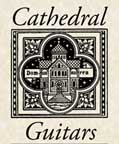 |
The Ten-String Guitar by Jose Ramirez III, from "Things About the Guitar  |
|
|
An obsession with achieving an enriched sound in the guitar led me to study an old, obsolete instrument: the viola d'amore, which has a very interesting feature. There are as many strings on the inside of this viola as there are on the outside, which are the ones that are played. The inner strings vibrate sympathetically and, together with the outer ones, produce a loud harmonious sound. The idea of applying this system to the guitar involved certain difficulties, but it was so appealing that I decided to give it a try. I made a guitar with two bridges: the normal outer one and another inner one where the six inside strings were attached, to be tuned just as the outer ones. These inner strings ran through the hollow neck to the head where a double machine head served to tune the twelve strings. The result of this whole contrivance was a powerful, beautiful sound. I immediately presented it to Maestro Segovia who was in Madrid at the time. He was very enthusiastic about the sound but at the same time he pointed out to me the invention's main failing: the inner strings kept on sounding and muddling the continuation of the musical piece being interpreted. It was necessary to cut off the sound of these strings just as in the pedals of a piano. But how? Segovia urged me to find a solution to this drawback, but he never offered opinions or solutions on technical matters that as far as he was concerned belonged to another world. He left me alone with the problem. All the solutions that occurred to me were totally anti-guitar, until I showed the thing to Narcisco Yepes who was also enthusiastic, but as he has a very analytic personality and an untiring investigative spirit, he rose to the challenge to try to help me solve the problem. After some time, Yepes proposed to me that I assemble an articulated part inside the guitar that would be activated by a remote control located on the footstool. This control would act as a piano pedal and activate the articulated part to muffle the sound of the inner strings whenever necessary. I was not very keen on putting so much gadgetry into the guitar, but because it was our only solution and since I was mad at myself for not having overcome the problem, I was willing to try it. But then Yepes telephoned me from somewhere that he had gone to give a concert, and told me: "Forget the inner strings. If you add four strings to the normal six strings all on the outside and these strings are tuned in a certain way for which I have made a study, we will have the same resonant and harmonic supports as with the inner strings, but with the advantage that by using a special technique, they can be easily muffled with the right hand whenever necessary." In fact, this was a ten-string guitar. I easily designed this special guitar and built it with no trouble. The only thing that concerned me was the increased tension on the bridge due to the larger number of strings, so I reinforced the resistance somewhat in that area. At a private meeting, I turned this guitar over to Yepes, who began to try it out by playing a piece. He resembled a first year student or even worse. After some time, he looked skyward. I feared he was going to release a string of insults, but he didn't. What he said was this: "What a marvelous mess I have gotten myself into." Five days later, his tenacity and self-didactic abilities allowed him to give a wonderful concert in Barcelona with this ten-string guitar, which indeed had enhanced resonance and beauty of sound, although it still fell short of the very inaccessible magic of the guitar with the inner strings. from "Things
About the Guitar |
|